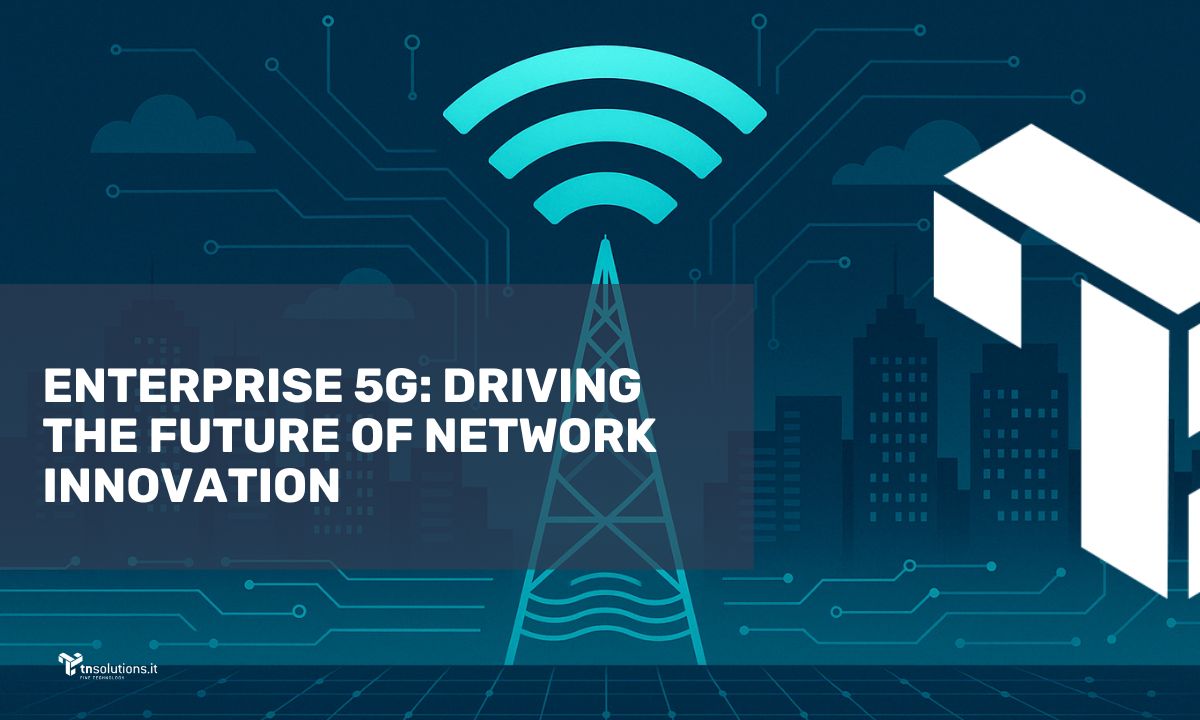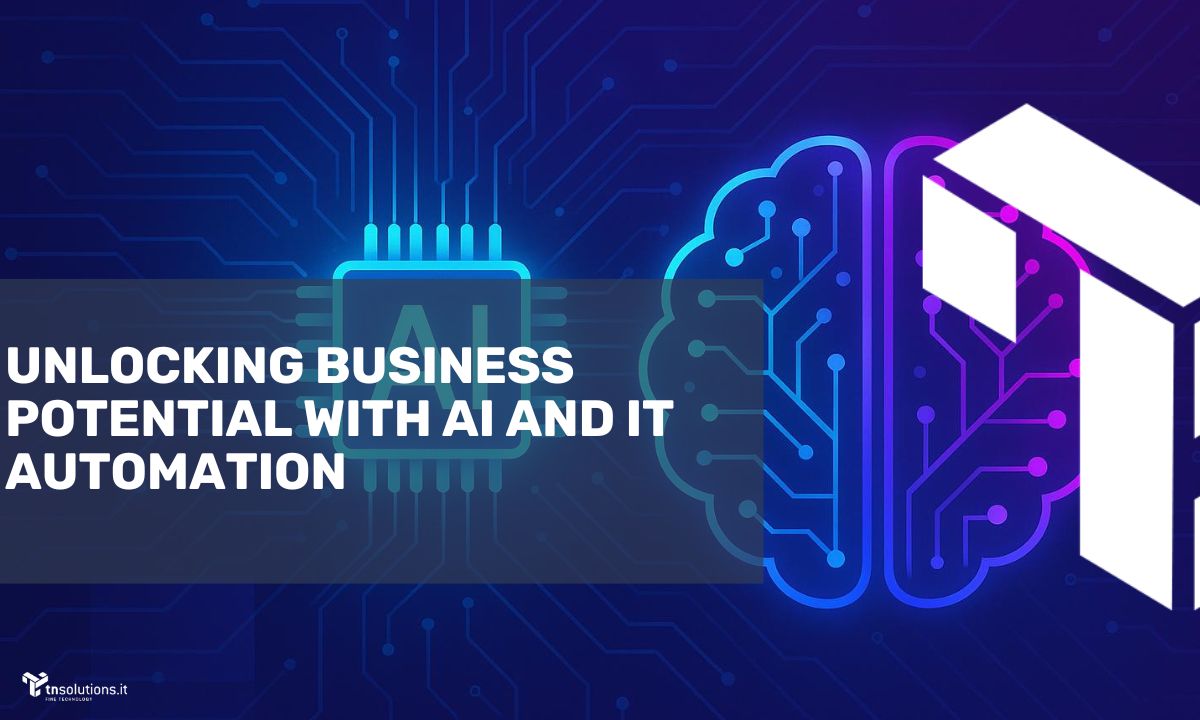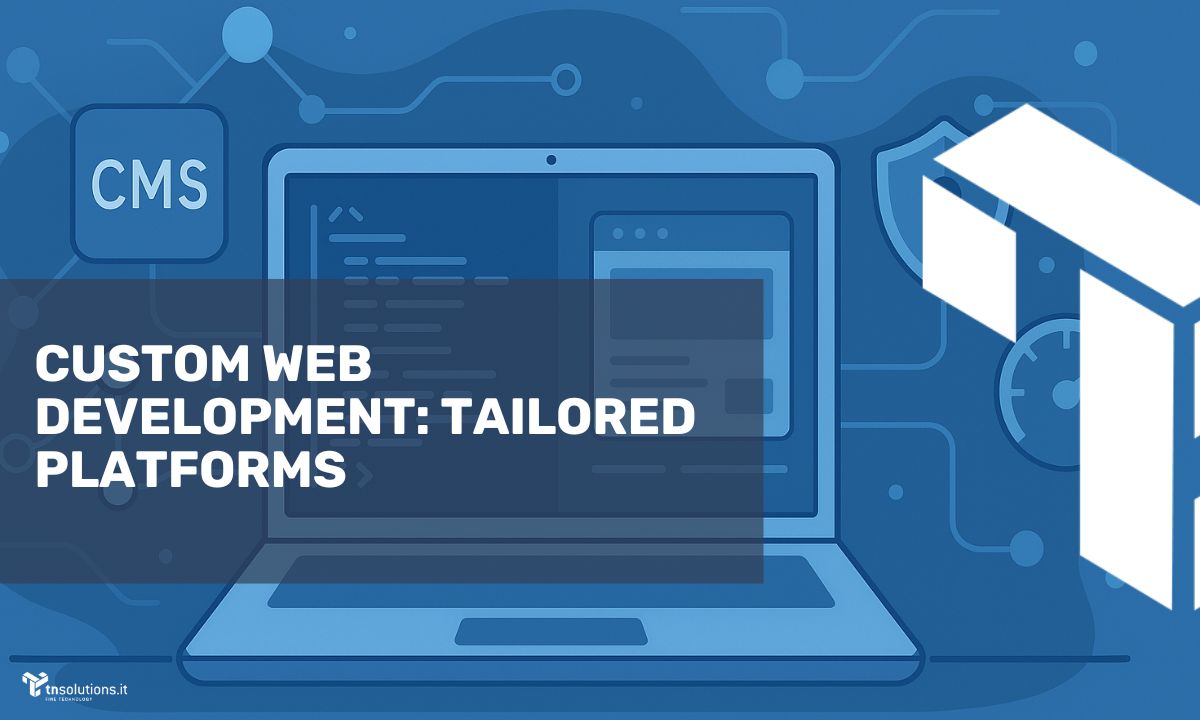
- From Early Mobile Networks to the 5G Innovation
- Network Architectures and Enterprise 5G Integration
- Use Cases and Competitive Advantages of Enterprise 5G
- Security and Reliability in Enterprise 5G
- Role of Scripting and Automation in 5G Networks
- IoT Potential and High-Density Mobile Networks
- Future Scenarios and New Frontiers of Enterprise 5G
- Conclusions
The evolution of networks in recent decades has undergone a progressive acceleration, thanks to the introduction of new technologies and protocols that have enhanced data transport capacity, connection stability, and usage flexibility. Among all the innovations currently revolutionizing the tech landscape, enterprise 5G stands out for its potential to radically transform how businesses manage 5G connectivity and access digital resources.
This new generation of mobile networks, characterized by high-speed connections, low latency, and a greater density of connected devices, opens up unprecedented opportunities for businesses. It offers not only performance improvements but also new business avenues. In particular, the synergy between IoT, cloud, and edge computing creates a scenario where digital services can be orchestrated intelligently and dynamically.
This article will analyze, from a technical perspective, the main characteristics of enterprise 5G, its integration into existing network architectures, potential adoption models, and implications for data security and management. It will also illustrate how the new generation mobile network can enable the development of mission-critical applications, advanced automation systems, and scripting processes aimed at improving network efficiency and resilience. Ultimately, understanding the dynamics and benefits of 5G connectivity is crucial for any business that wants to remain competitive in an increasingly globalized and innovation-driven market.
From Early Mobile Networks to the 5G Innovation
Historical Context and Evolution of Mobile Networks
To better understand the potential of enterprise 5G, it is helpful to outline a brief overview of mobile network evolution. Since the advent of 1G networks, which were mainly intended for analog voice traffic, subsequent standards have aimed to increase data transport capacity and expand the range of services:
- 2G (GSM): Introduced voice digitalization and the first messaging services (SMS).
- 3G (UMTS/HSPA): Enabled large-scale data connectivity, allowing mobile apps and low-res streaming services.
- 4G (LTE): Greatly improved data transfer speed and coverage, enabling bandwidth-heavy applications like HD video streaming and advanced browsing.
With the advent of 5G, mobile networks take a quantum leap, offering performance up to 100 times greater than 4G and latency reduced to just a few milliseconds. These benefits go beyond enhancing the end-user experience and usher in a new paradigm where digital services can be delivered with unprecedented levels of reliability and responsiveness.
Key Features of Enterprise 5G
- High-Speed Connectivity: Enterprise 5G delivers gigabit-per-second peak speeds, allowing near real-time data exchanges.
- Low Latency: With latency as low as 5 milliseconds, mission-critical applications, industrial robotics, and remote control systems can operate with advanced precision and synchronization.
- Massive Connectivity: 5G is designed to support up to one million connected devices per square kilometer, enabling ultra-dense IoT scenarios.
- Network Slicing: The network can be virtually segmented into slices, each with customized QoS and security requirements, allowing diverse services to coexist on the same physical infrastructure.
Network Architectures and Enterprise 5G Integration
Core Network and Virtualization
A key element in the evolution of networks toward enterprise 5G is the virtualization of network functions (NFV) and the adoption of Software-Defined Networking (SDN) architectures. These approaches enable:
- Hardware-Software Decoupling: Network functions (routers, firewalls, load balancers) are no longer tied to dedicated physical devices but run as virtualized services on standard servers.
- Dynamic Scalability: Network resources and capacity can be rapidly added or removed based on load and specific service needs.
- Operational Agility: Network configuration and management can be automated with scripting and orchestration tools, reducing deployment time and cost.
In the context of enterprise 5G, the core network becomes increasingly software-defined, enabling advanced features such as network slicing, multi-access management, and edge computing integration. For example, open-source platforms like OPNFV offer a testing and integration environment for experimenting with 5G services on virtualized infrastructures, while commercial solutions from vendors like Ericsson, Nokia, and Cisco provide end-to-end networks with performance guarantees and professional support.

Integration with Legacy Networks and Hybrid Scenarios
Many organizations must reconcile 5G connectivity with existing network infrastructures based on 4G, Wi-Fi, or wired (Ethernet, MPLS) technologies. To enable a smooth and uninterrupted transition, various strategies can be adopted:
- Multi-RAT Coexistence: 5G coexists with previous technologies, allowing devices to use the best available network during a transitional phase.
- Edge Gateways: Gateways collect traffic from legacy networks and route it to the 5G infrastructure, handling protocol conversion, security, and QoS.
- SD-WAN and Unified Orchestration: Next-gen SD-WAN solutions aggregate 5G, LTE, and fixed links, ensuring optimal routing and centralized management of policies and SLAs.
Use Cases and Competitive Advantages of Enterprise 5G
Industrial Manufacturing and Collaborative Robotics
Manufacturing and production sectors can greatly benefit from enterprise 5G’s high-speed and low-latency connectivity. Real-world applications include:
- Advanced Robotics: Collaborative robotic systems (cobots) synchronize their movements in real time, avoiding collisions and sharing critical production line data.
- Real-Time Quality Control: High-definition sensors and cameras transmit data and images instantly, enabling immediate defect detection.
- Autonomous Internal Vehicles: In large facilities, AGVs and drones can transport materials with precision, following optimized routes and avoiding bottlenecks.
Logistics and Supply Chain Management
The latest mobile networks also impact logistics processes by enhancing visibility and coordination:
- Real-Time Tracking: IoT-enabled packages transmit location, temperature, humidity, or load status. 5G aggregates this info into centralized dashboards, improving responsiveness.
- Smart Warehouses: Automated picking systems and autonomous vehicles use 5G to manage storage and distribution, reducing order prep time and minimizing errors.
- Route Optimization: Predictive algorithms analyze real-time data (traffic, weather, security) to optimize delivery paths, improving punctuality and customer satisfaction.
Smart Cities and Critical Infrastructure
5G connectivity also opens new possibilities for urban environments with smart city and public service management concepts. IoT enables:
- Environmental Monitoring: Sensors across urban areas send real-time environmental data to authorities.
- Traffic Management: Smart traffic lights and mobility systems recalibrate flows based on actual transit volumes.
- Public Safety Support: HD cameras and recognition systems paired with high-speed connections assist in monitoring events and managing emergencies.
Security and Reliability in Enterprise 5G
Threats and Vulnerabilities in the New Network Paradigm
While enterprise 5G offers great opportunities, it also introduces new potential cyber risks. The open nature of the ecosystem—with IoT devices, remote sensors, and virtualized services—means:
- Multiple Endpoints: The increasing number of connected devices expands attack surfaces, requiring centralized management of patches, authentication, and encryption.
- Network Function Virtualization: Simplifies management but demands robust tenant separation and implementation of strong security mechanisms (virtual firewalls, intrusion detection, segmentation).
- Advanced Attacks: Targeted techniques (DDoS, 5G signaling protocol exploits) may hit multiple infrastructure layers, requiring multi-layer defense and continuous monitoring.
Protection Solutions and Risk Management
To ensure high reliability, businesses should implement various strategies and controls:
- Segmentation and Network Slicing: Logically isolate different services or departments to contain incidents within limited perimeters.
- Strong Authentication and Encryption: Use secure protocols (TLS, IPsec) and multi-factor authentication to protect data traffic and network access.
- Real-Time Monitoring: Analytics and intrusion detection tools powered by scripting can detect anomalies and suspicious behavior for quick response.
- Backup and Recovery: Disaster recovery and business continuity plans ensure service resilience in case of failures or cyberattacks.
Role of Scripting and Automation in 5G Networks
Configuration Automation and Service Orchestration
Managing complex networks like those based on 5G requires high levels of automation to avoid configuration errors and accelerate service deployment. Scripting plays a key role in this context:
- Automatic Provisioning: Using Python, Ansible, or Chef, admins can define repeatable config templates for routers, switches, security functions, and virtual components.
- Dynamic Slice Management: Through APIs and dedicated scripts, slices can be created, modified, or deleted based on bandwidth, latency, and security needs.
- Patch Management: Automation allows patch distribution across hundreds of devices, minimizing vulnerabilities and downtime.
Advanced Monitoring and Performance Optimization
Collecting and analyzing network metrics (latency, throughput, error rate) is crucial to maintain stability. Using scripts and automation pipelines, organizations can:
- Gather Real-Time Data: Tools like Prometheus, Grafana, Dynatrace, or AppDynamics collect and visualize KPIs.
- Predict Congestion: Machine learning models identify unusual traffic patterns and allocate resources or reroute loads accordingly.
- QoS Adjustment: Smart scripts adjust traffic priorities based on SLAs or contracts, ensuring critical applications receive proper service levels.
IoT Potential and High-Density Mobile Networks
Industrial and Consumer IoT Scenarios
5G’s ability to support vast numbers of devices makes it ideal for both industrial and consumer IoT. Examples include:
- Smart Manufacturing: Distributed sensors provide real-time machine data, enabling predictive maintenance and process optimization.
- Smart Home & Wearables: Appliances, lighting systems, wearables, and voice assistants communicate in real time via 5G.
- Connected Vehicles: Equipped with sensors and telemetry modules, vehicles exchange traffic, emergency, or infotainment data.
Big Data and Analytics Management
The massive volume of IoT data requires platforms that can quickly store and process information from thousands or millions of devices. Enterprise 5G enables continuous data flow to data centers or edge infrastructures where analytics engines can:
- Identify Trends: Data mining and ML systems uncover hidden patterns, improving production or sales strategies.
- Real-Time Reporting: Low latency ensures instant updates on dashboards, supporting timely and informed decisions.
- Trigger Automation: When thresholds are exceeded, scripts intervene immediately (e.g., close a valve or stop a motor).
Future Scenarios and New Frontiers of Enterprise 5G
Advanced Network Slicing and Customized Services
As enterprise 5G evolves, network segmentation and service personalization will grow in importance. Possible developments include:
- On-Demand Slicing: Companies can request temporary slices for events, fairs, or production peaks, enjoying high-performance connectivity without proprietary infrastructure.
- Premium Services: Network providers offer differentiated service levels, such as near-zero latency ideal for telemedicine, advanced gaming, or robotic surgery.
- Tailored Security: Each slice can implement specific encryption and authentication policies based on risk profiles and industry regulations (PCI-DSS, GDPR).
5G and Edge Computing
A cornerstone of enterprise 5G is edge computing, which shifts processing and storage closer to access points:
- Lower Latency: By performing calculations near devices, cloud round-trips are reduced, minimizing delays.
- Efficient Bandwidth Use: Processing data locally means only summarized results are sent to the cloud, reducing bandwidth and costs.
- Privacy & Compliance: Sensitive data stays local, complying with regulations on data localization (e.g., in healthcare, finance).
Toward 6G and Beyond
Research into mobile networks doesn’t stop at 5G. Labs and international consortia are already working on 6G specifications, promising even higher speeds, better reliability, and integration with quantum technologies. Though far from commercialization, 6G could introduce radically new paradigms in network architecture and available services.
Conclusions
5G connectivity marks a turning point in the tech landscape, offering new possibilities for enterprise networks in performance, reliability, and flexibility. High speed, low latency, and support for millions of devices are key features enabling IoT, advanced automation, and mission-critical services. Companies aiming to stay at the forefront must integrate enterprise 5G into their development plans while adopting scripting and orchestration tools to simplify management and ensure security.
In the near future, we can expect increased use of network slicing, edge computing, and virtualization-oriented strategies. These enable service-level personalization and adaptation to specific application needs. Moreover, the synergy between 5G and legacy infrastructures will ensure a smooth transition, mitigating operational impacts.
Strategically, 5G is not just a tech upgrade but a true innovation enabler, capable of launching new business models and enhancing competitiveness in the global market. From smart factories to connected vehicles, smart cities to next-gen digital services, 5G stands at the center of a rapidly expanding ecosystem where adaptability and security are crucial.
On the infrastructure front, NFV and SDN architectures support unprecedented flexibility, where automation and scripting reduce errors and make the entire system more responsive. At the same time, critical challenges remain: data protection, regulatory compliance, IoT complexity, and integration with legacy systems.
Companies that harness the full potential of enterprise 5G will have the chance to redefine processes and extend their reach, achieving results once thought impossible. Ultimately, the evolution toward fifth-generation networks isn’t just a step forward—it’s a paradigm shift poised to reshape the boundaries of digital innovation in the enterprise world and beyond.











